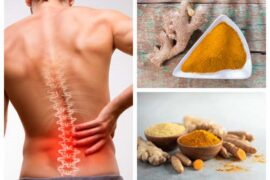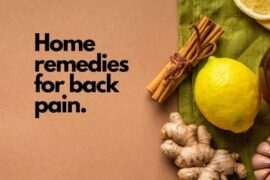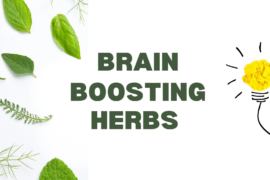Do You Have Varicose Veins?
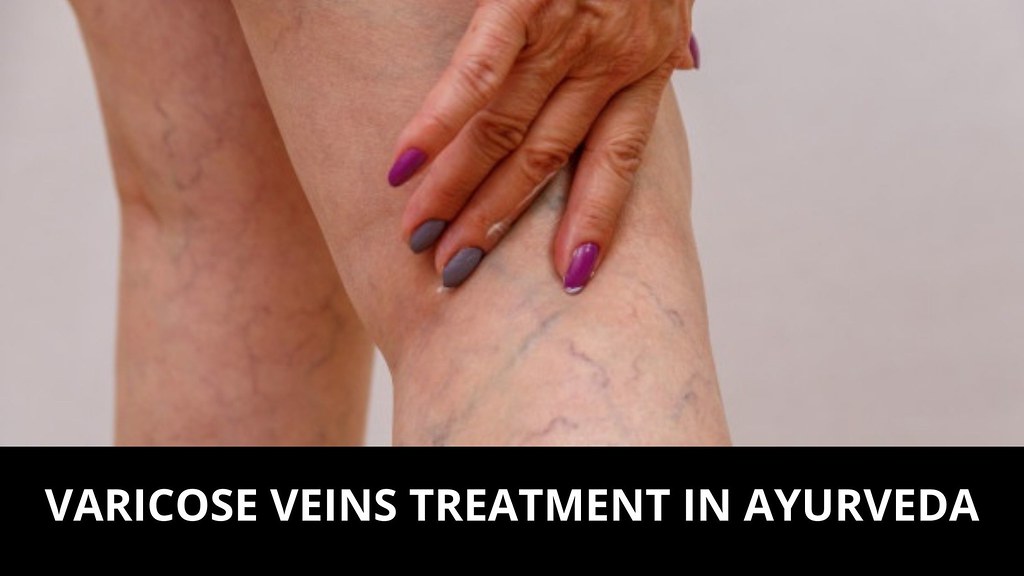
Varicose veins are enlarged, elongated, tortuous veins. It can happen in any superficial vein on the body. But those commonly affected are leg veins. It is the penalty against upright posture of human body against gravitational force – sitting, standing and walking – increases the pressure in the lower limb veins.
Varicose veins may be just a cosmetic concern for some people whereas for others it can cause major issues like pain, swelling and discolouration in lower limbs, itching skin, spontaneous bleeding, a large or small non healing ulcer over the ankle area.
Why do People get Varicose Veins?
Arteries carry blood from your heart to the rest of your tissues, and veins return blood from the rest of the body to your heart, so the blood can be recirculated. To return blood to your heart, the veins in your legs must work against gravity.
Many of you may not be aware that there are valves in the veins of lower limbs which allow only upward flow of blood. When these valves become weak or damaged, upward flow of blood is hampered and stagnation of this blood leads to over stretching and become tortuous calling the condition as varicosity.
Who are at Risk?
- Standing or sitting for long hours: Gradual damage of the valves happens due to continuous pressure on the veins to pump with more force due to dependent posture.
- Gender: Women are more prone due to hormonal changes during pregnancy and menopause. As these hormones are responsible for relaxation of veins in females. Also, hormone treatments, such as birth control pills, may increase your risk of varicose veins.
- Pregnancy: Mechanical pressure due to the growing foetus as well as hormonal impact of veins during pregnancy are major causes
- Age: As the age advances, due to wear and tear both the vein wall and valves become weak. The risk of varicose veins increases with age. Eventually causing reflux of the blood causing varicosity.
- Family history/congenital: In many people there will be family history of/congenital weak vein walls or absence of valves which are causes of varicose veins
- Obesity: It is very obvious that overweight puts more added mechanical pressure over lower limb veins to be pumping the blood against the gravity.
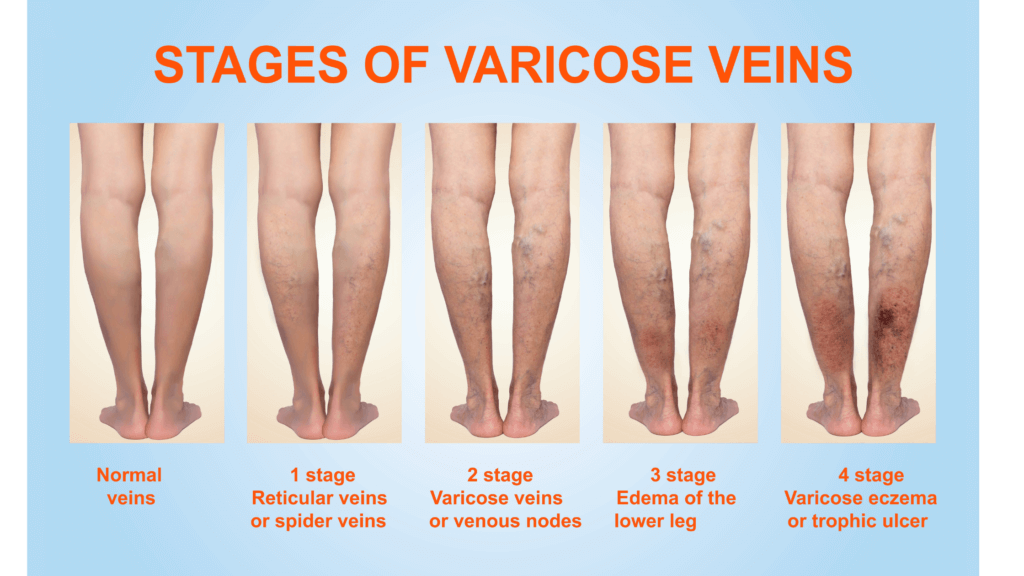
What Symptoms do I look for if I doubt of varicosity?
All cases of varicose veins need not necessarily exhibit all the below symptoms, however the first 2 symptoms will be always present
- Tortuous and bulged (mild to severe degree) veins, often looking like cords on the legs
- Bluish, bluish black, purplish veins
- Dull aching to severe pain in legs associated with heaviness in legs
- Swollen legs, sometimes palpable veins with hardness and pain on touchin
- Sudden shooting pain in the middle of night
- Worsened pain after sitting or standing for a long time
- Itching around the local area
- Skin discoloration
- Wound are ulcer formation in the lower part of the legs mostly on either side of ankle which is not healing from long time
- Spider veins – bluish, bluish black small spider web like appearing veins mostly seen over the thighs, popliteal area, below knee and around ankles. Spider veins are found closer to the skin’s surface and are often red or blue.
When to see a doctor?
Although measures like walking, exercise, elevating legs or wearing compression stockings may help reduce pain and prevent them from getting worse, it is better to see your doctor as soon as you notice any of the above symptoms.
What complications can occur if left untreated?
- Non healing Ulcers: Painful ulcers may form on the skin near varicose veins, particularly near the ankles.
- A discoloured spot on the skin is an alarming sign. Possible ulcer! See your doctor immediately.
- Blood clots. Any pain, feverishness, swelling in the leg warrants medical attention because it may indicate a blood clot- a condition known medically as thrombophlebitis.
- Occasionally, as the vein close to the skin may burst there could be spontaneous minor bleeding. It is better to seek medical attention.
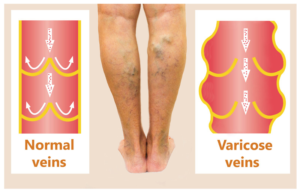
Current Treatment Options
Prevention
Although there is no way to reverse the condition once it happens, one can always prevent the occurrence with proper lifestyle and reduce the risk of complications by following the advises given by their doctor.
Diet and Lifestyle
- Foot end elevation whenever in lying down position and while in dependent posture
- Regular walking and leg exercises to improve blood circulation
- Avoid continuous sitting or standing
- Use elastic compression stockings specific to varicose veins (in case if you are already affected) – as advised by your medical practitioner
- Controlling the body weight
- Avoid spicy, gravy, sour and excessive fried food
- Eat more of fibre containing fruits and vegetables, cereals and pulses
- Avoid anything that exerts more pressure on abdomen
- Avoid using high heeled shoes and tight innerwear
Internal Medications
- Analgesics and anti-inflammatory drugs for the pain and swelling
- Drugs to dissolve the clots in case of blood clots in the veins
Surgical treatments – is required only when the daily life is hampered due to complication of varicose veins.
- Surgical Ligation of the severely damaged and enlarged veins
- Stripping off of the large varicose vein
- Injection of sclerosant agent and laser therapy in small superficial varicosities
What Ayurveda Offers?
- Diet and lifestyle play a major role in preventing and reducing complications. Ayurvedic treatments are helping a large number of people suffering with mild to severe degree of Varicose veins without having to undergo surgical treatments.
- Internal medications prepared of Manjista, Guduchi, Gokshura, Punarnava, Guggulu, various ghee preparations help in reducing the pain and swelling, dissolving clots and addressing the skin issues. However, the medicines should be only consumed after consulting an Ayurvedic Physician.
- There are multiple external treatments also available in Ayurveda like Udwartana, Utsadan, Abhyangam and swedam -these will help in reducing pain, swelling and discolouration over skin along with helping to strengthen the muscles and veins and enable better circulation.
- The major Panchakarma advised in varicose veins are – Virechanam and Basti which again to be carried out under strict supervision by an experienced Ayurvedic physician.
- Blood letting is one more major treatment in Ayurveda – carried out either using leech application or direct vein puncturing. With this the stagnated blood is let out and helps to heal the ulcer and reduces pain and swelling. This also helps in reducing the skin discolouration and itching.
At I-AIM Healthcare, Bangalore, we provide a range of specialized and effective treatments for varicose veins!

